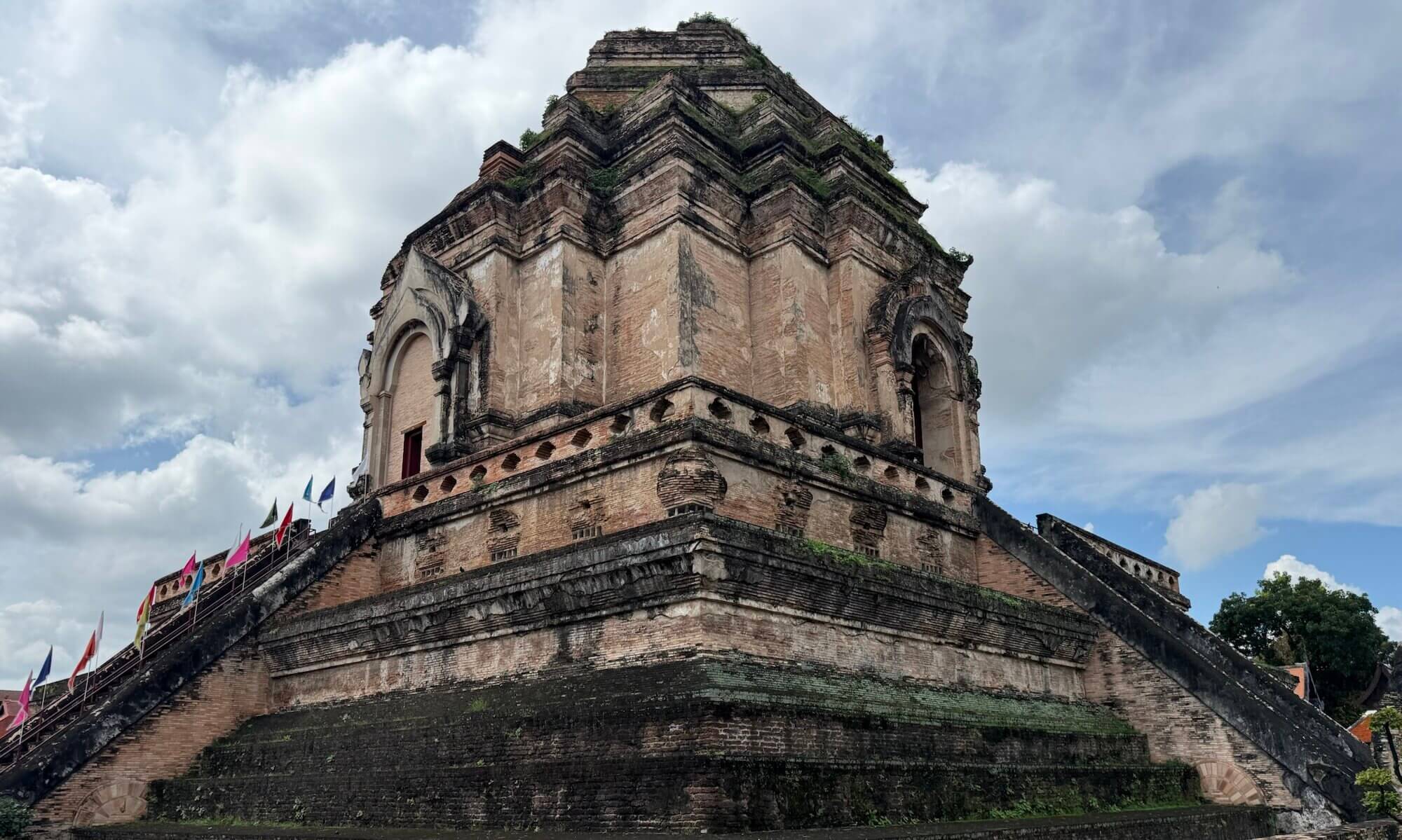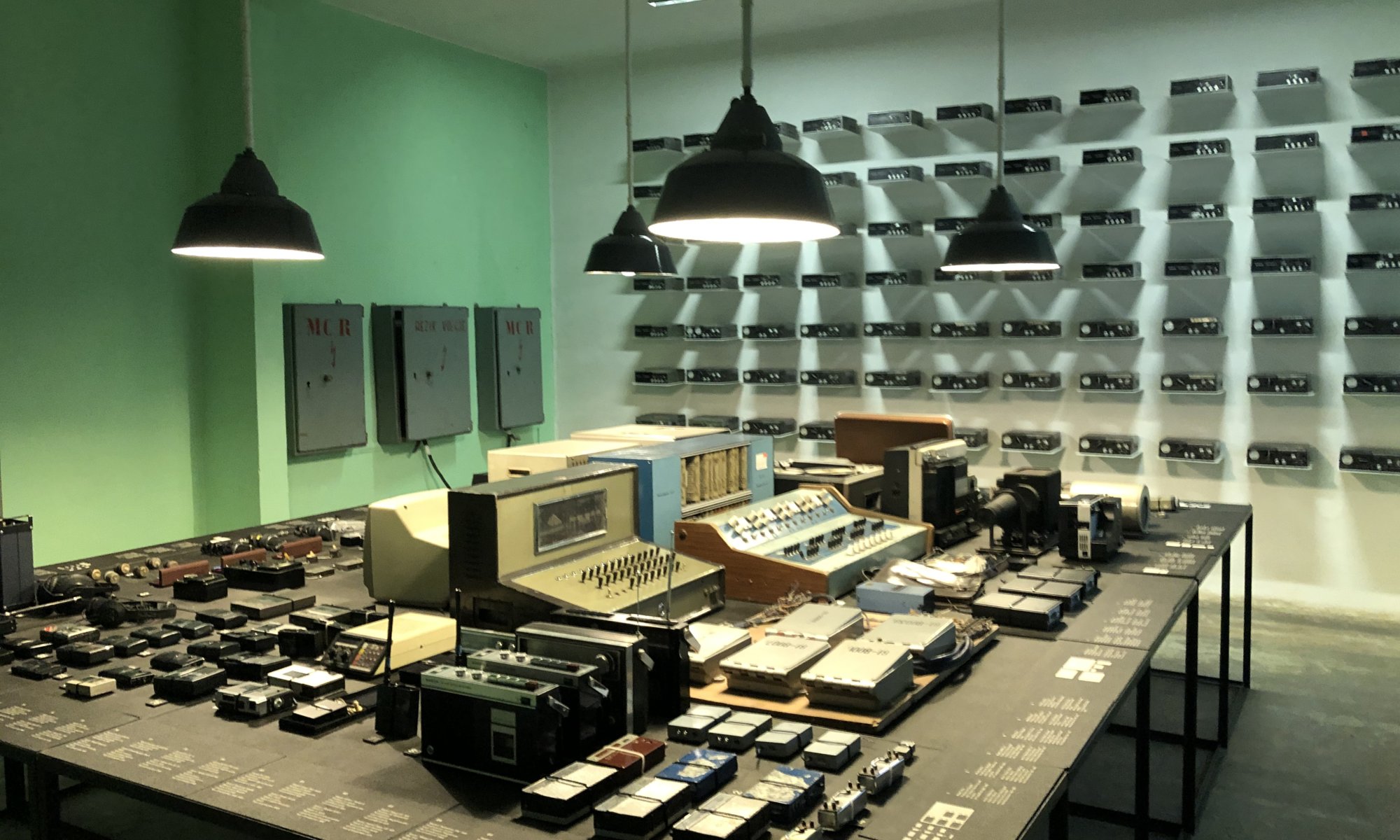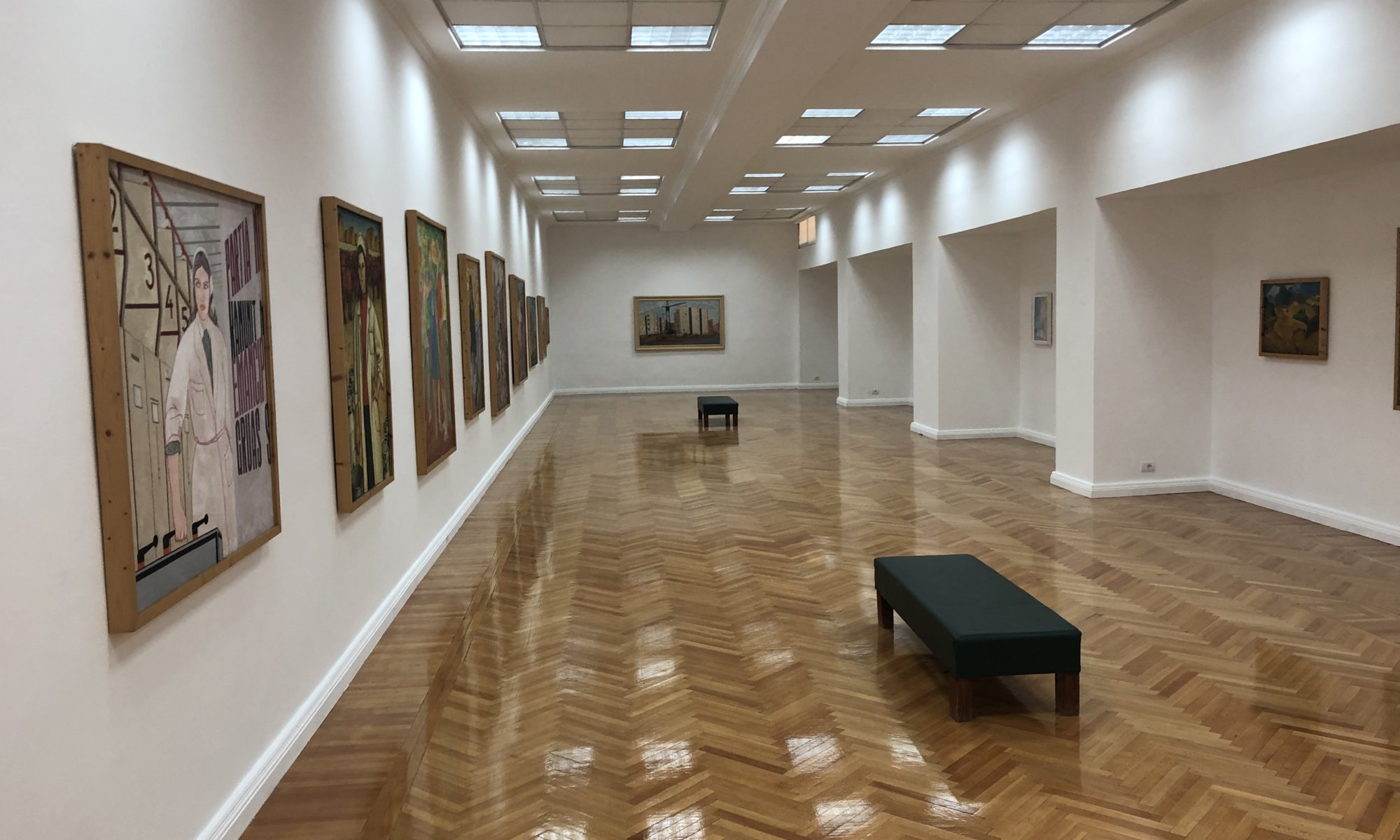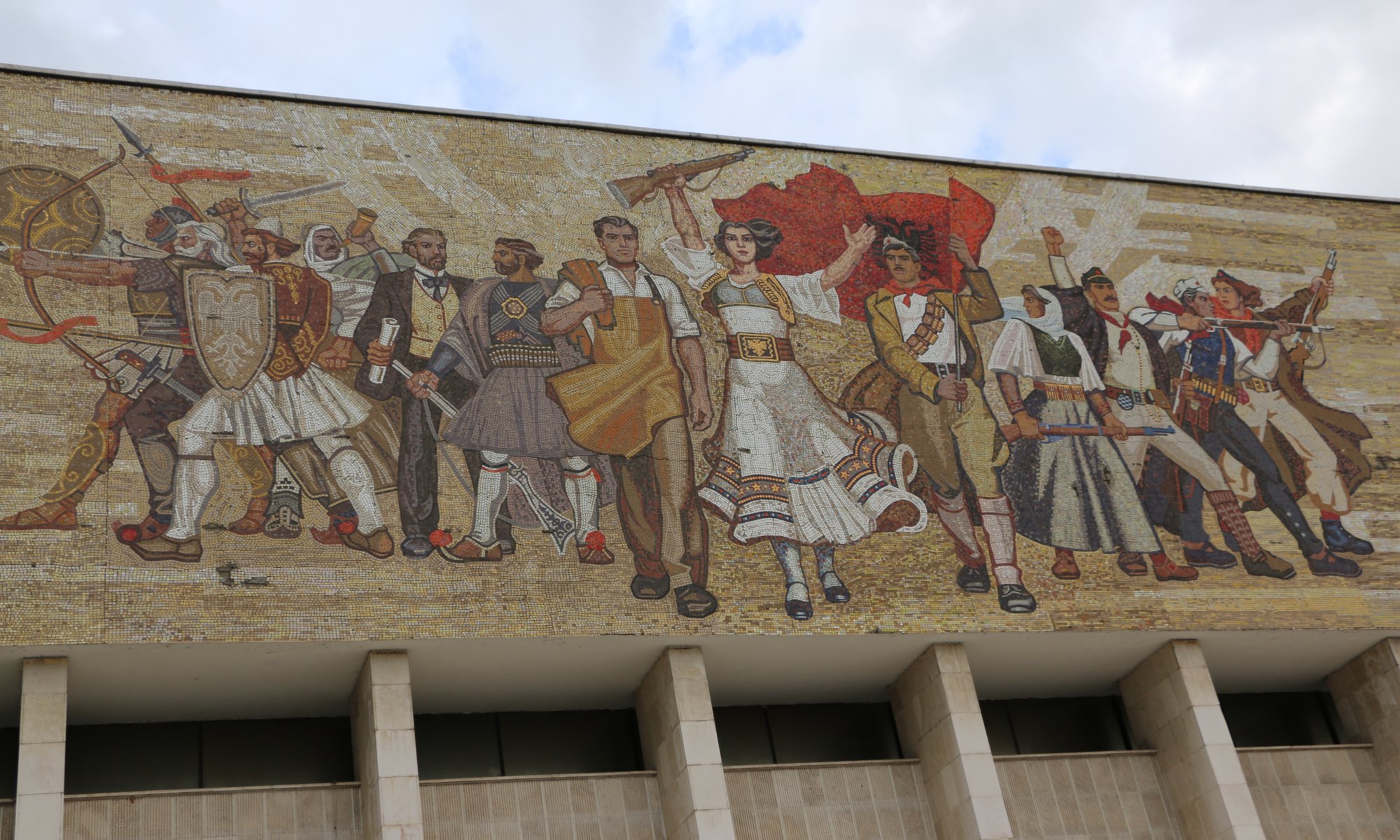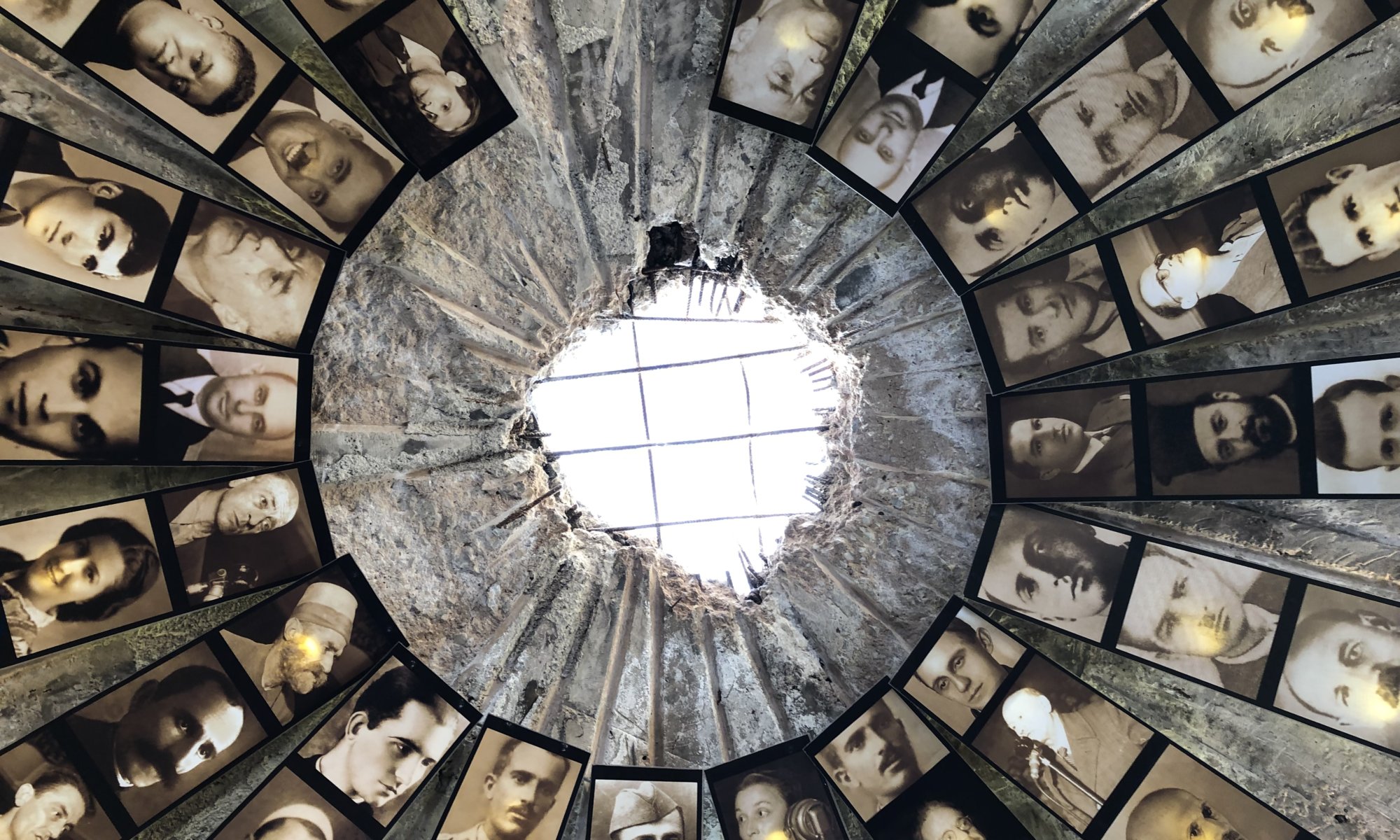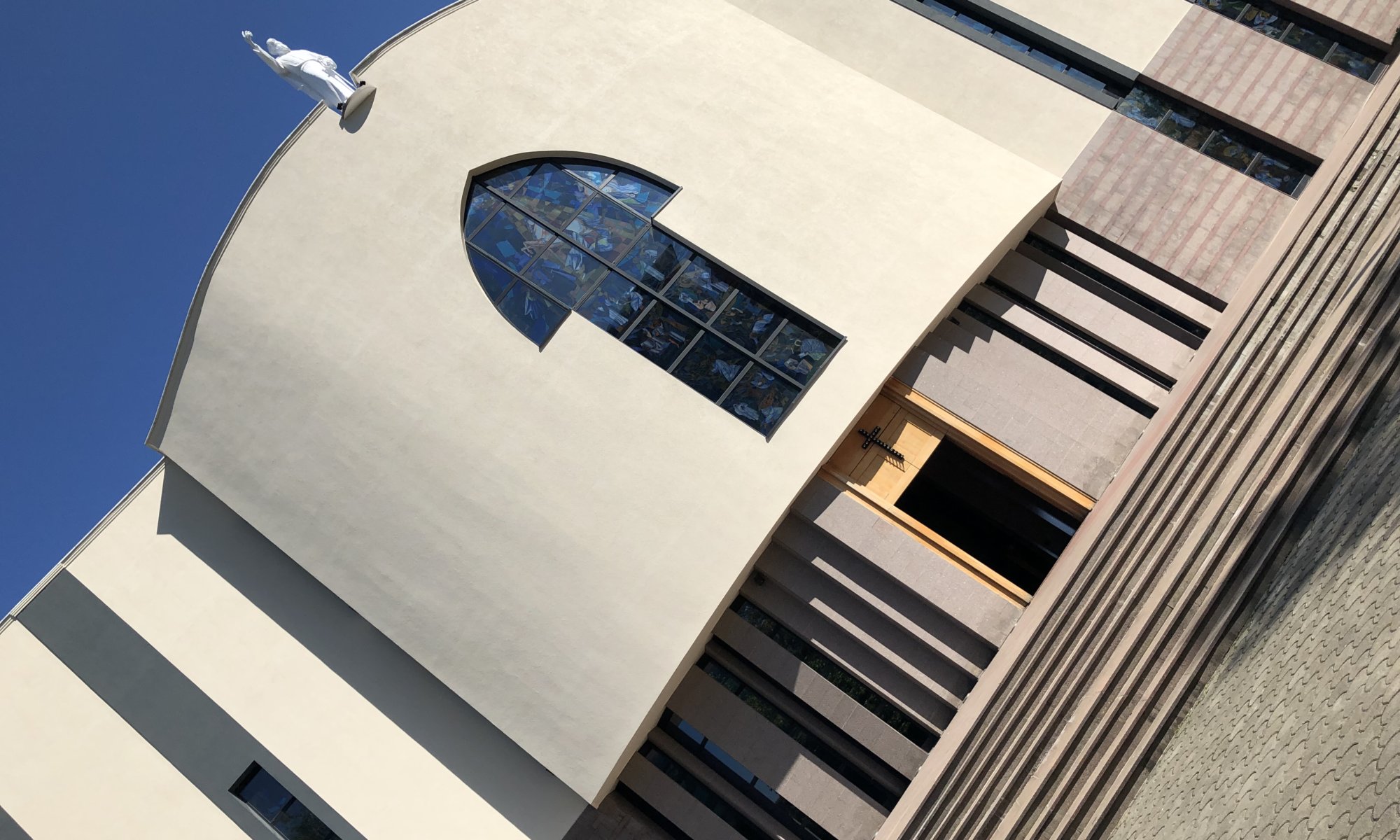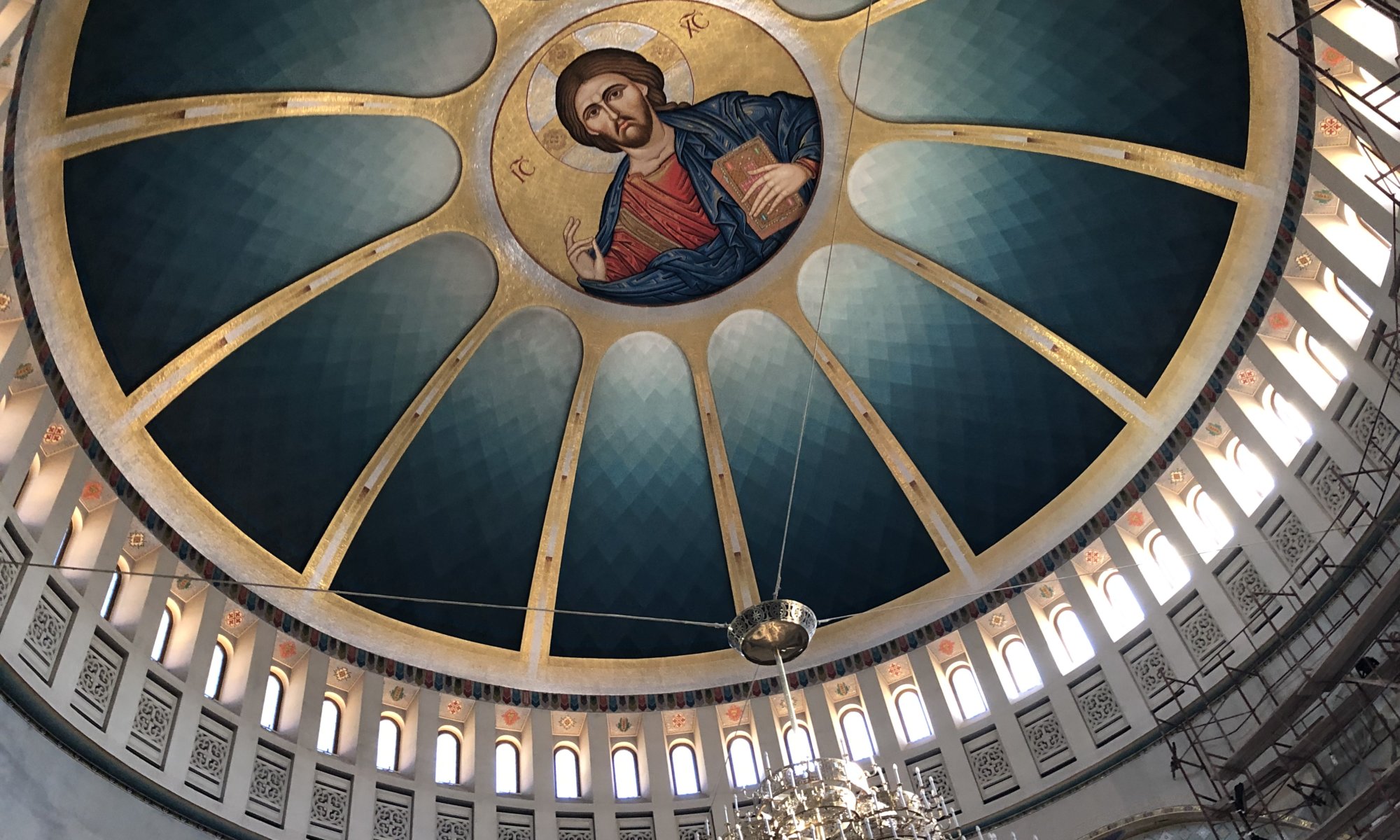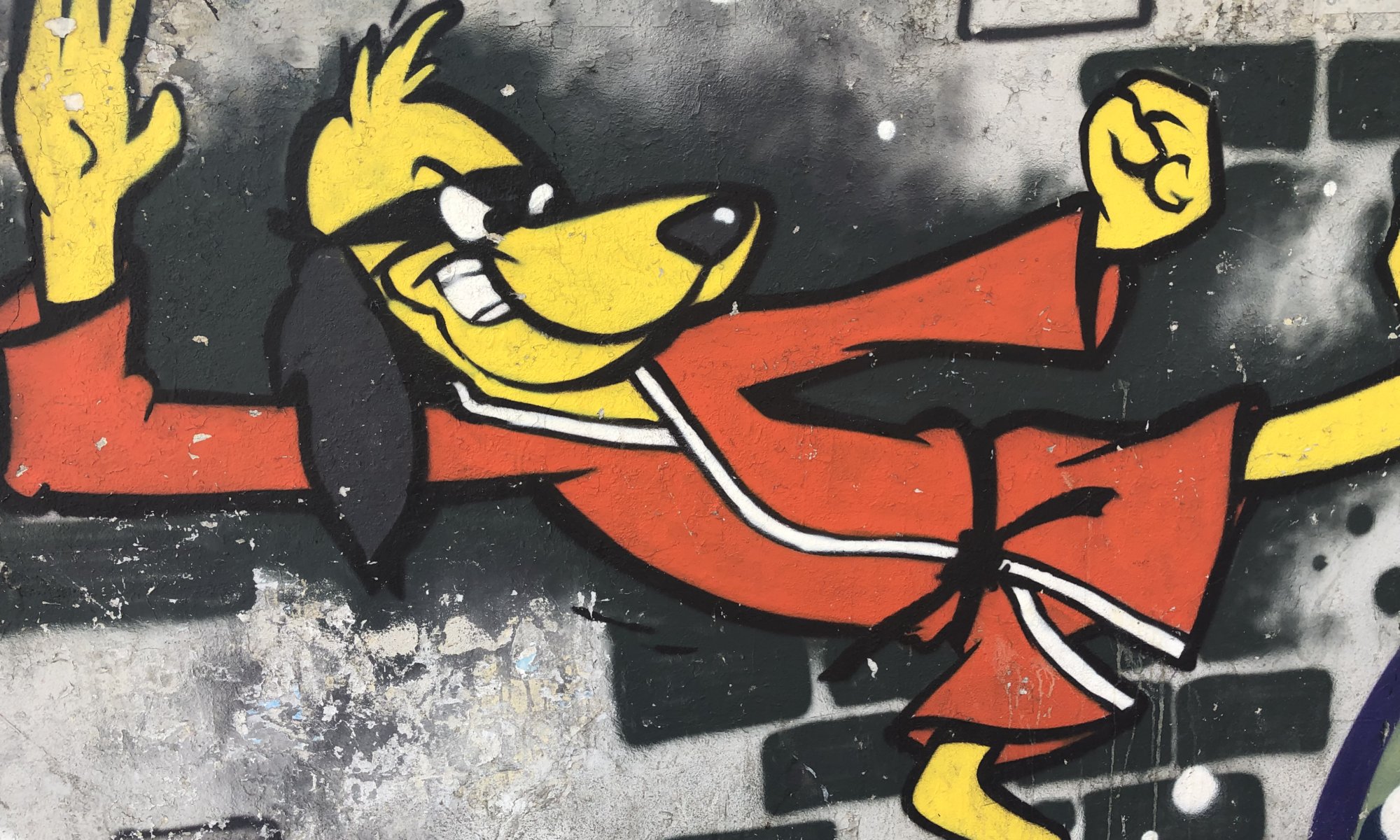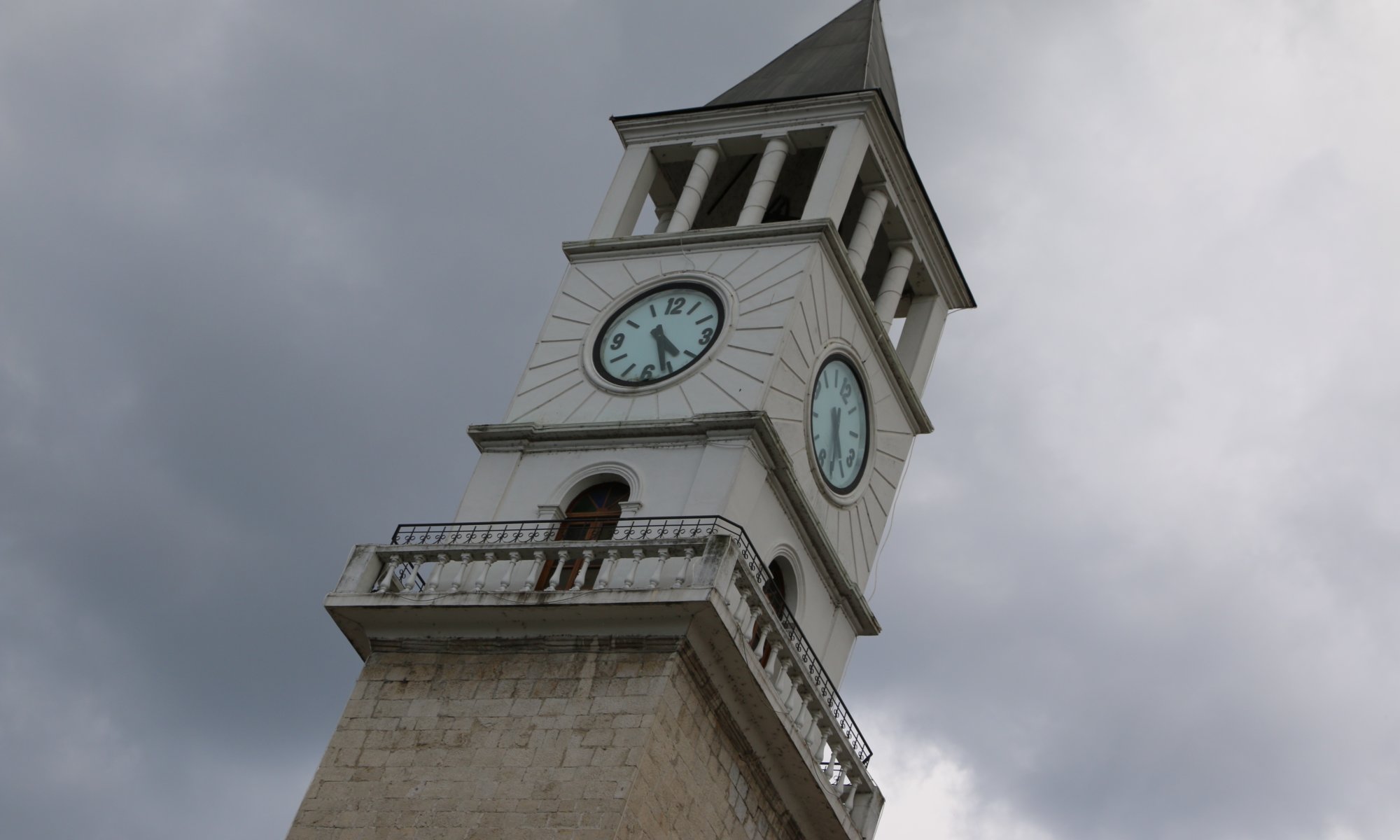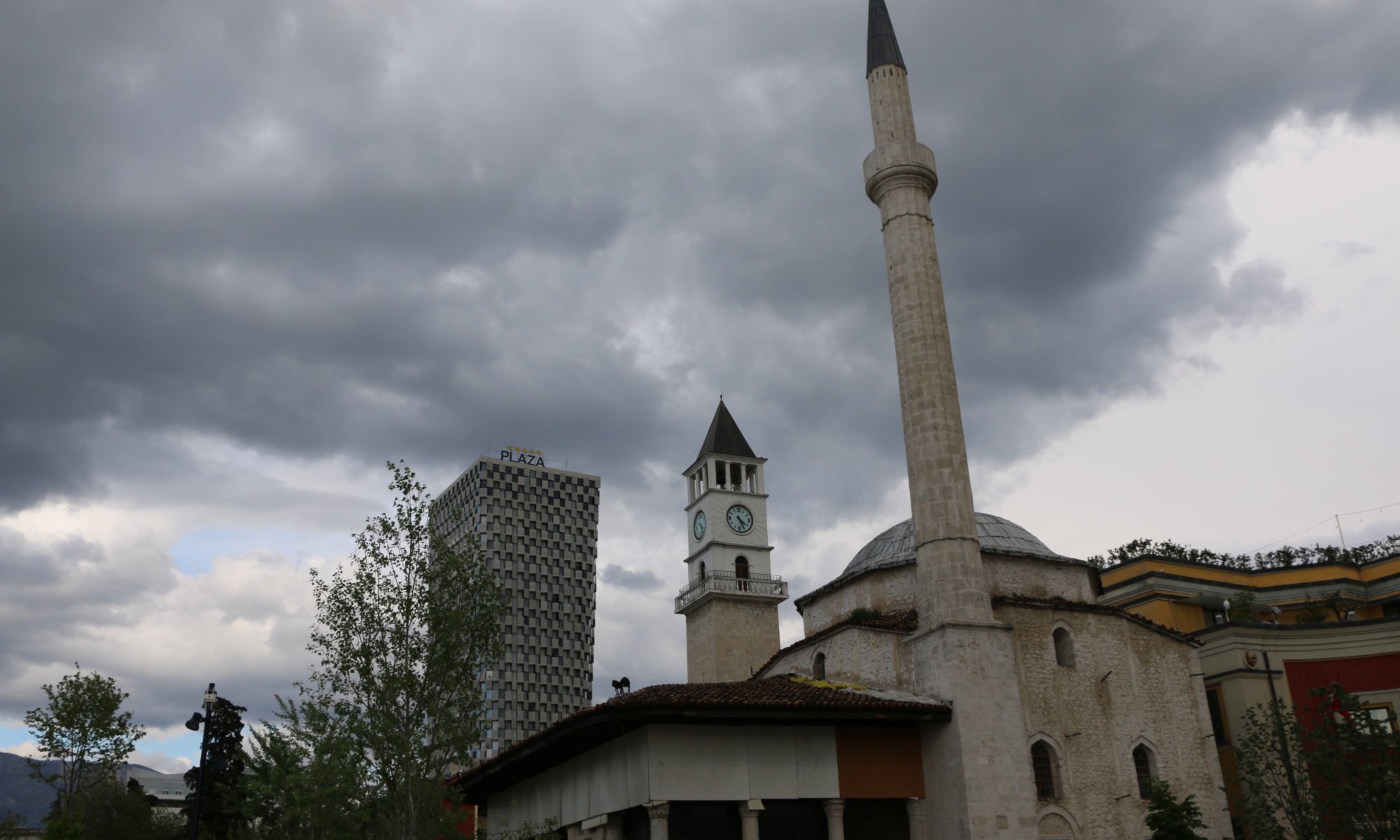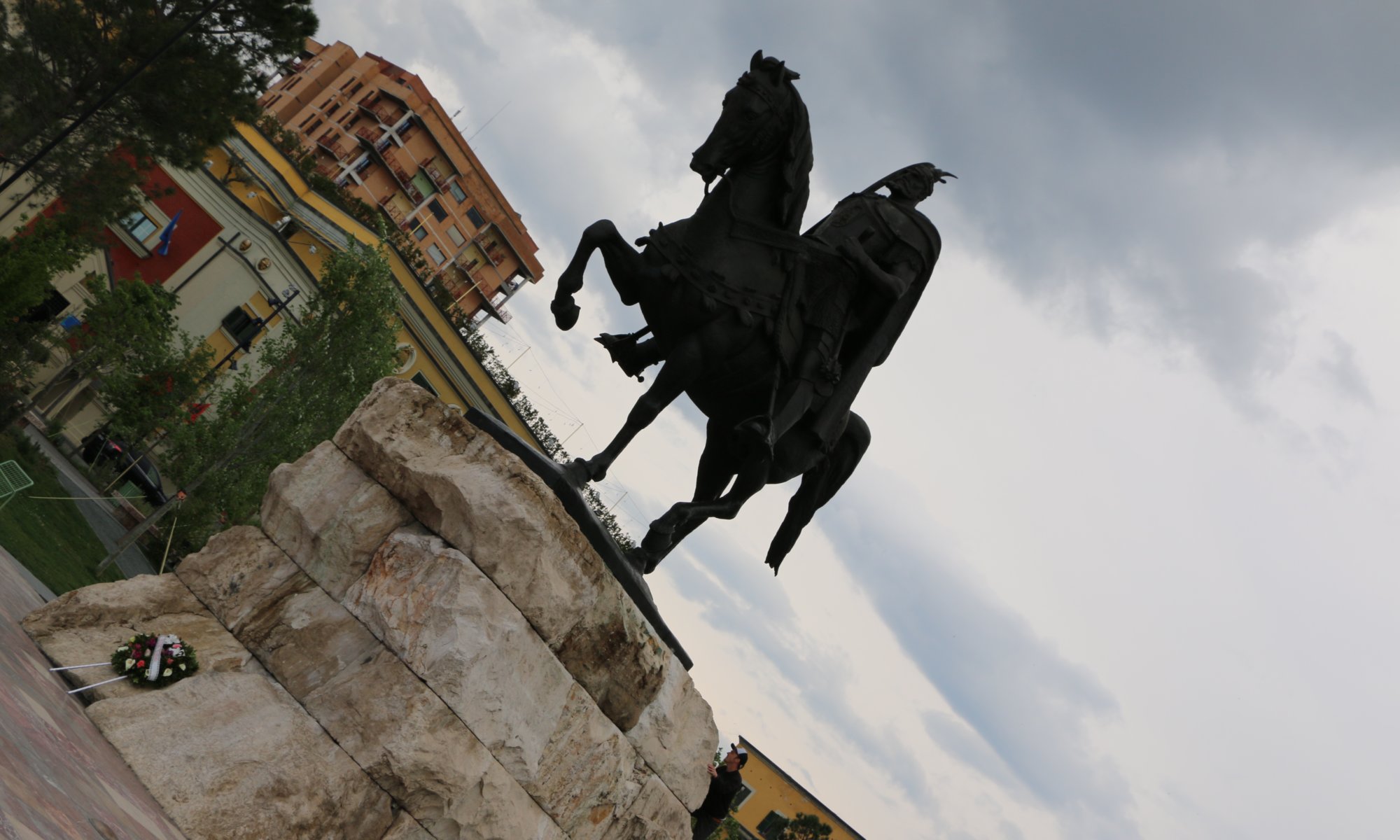For a long time nobody really knew what was happening in the house with leaves growing around it – but everybody had a suspicion. First the Geheime Staatspolizei (Gestapo) of the occupying Germans used the building for interrogations, then the Albanian secret service, the Sigurimi, took it over for the same purpose. It became their central office between 1944 and 1991. Since 2017 the Shtëpia e Gjetheve (‘House of Leaves‘) is now open as the Museum of Secret Surveillance.
Continue reading “House of Leaves”Social realism
The national art gallery of Tirana, Albania or Galeria Kombëtare e Arteve is located close to the city centre at Bulevardi Dëshmorët e Kombit. You can easily find it behind the artwork ‘The Cloud‘ (REJA). From the outside the building doesn’t look too promising but it has a good collection of 4100 historic works – beginning in the 13th century CE – and the presentation of these is very good. On the ground floor changing exhibitions are shown, often with contemporary art.
Continue reading “Social realism”Albanian national history
The Muzeu Historik Kombëtar is located directly at the Skanderbeg square in the heart of Tirana, Albania. You can’t overlook this building as it carries a giant mosaic (called Shqipëria / Albania) that shows Albanians from different eras – only the red star above Mother Albania has been removed. The museum shows the national history of the country chronologially from ancient times until today.
Continue reading “Albanian national history”Sigurimi
Not far away from the Skanderbeg square of Tirana, Albania you can find several buildings belonging to ministries. Of course during communist times a bunker system was secretly created underneath that is today used as a museum. It is named Bunk’Art 2 and is an addition to the Bunk’Art museum within the fallout shelter in the eastern suburbs of the city.
Continue reading “Sigurimi”St. Paul‘s cathedral
The Katedralja Katolike Shën Pali at Tirana, Albania is one of the two catholic churches in the centre of the city. It is a modern one from 2002 and isn’t as decorative as older catholic churches. It is named after apostle Paul as it is said that he was preaching in the region of Albania while he was travelling through the Roman empire.
Continue reading “St. Paul‘s cathedral”Resurrection cathedral
If you’re visiting an orthodox Christian church you typically would expect an old building – but the resurrection cathedral (Katedralja Ortodokse ‘Ngjallja e Krishtit‘) of Tirana, Albania has been opened in 2012 between the Skanderbeg square and the park Rinia. Therefore it is a new and modern building. Its predecessor from 1865 was standing at the Skanderbeg square and was torn down in 1950 to build the cultural palace now standing there.
Continue reading “Resurrection cathedral”Street art
If you’re arriving at Tirana, Albania and know other cities of the balkans than you immediatly recognize a big difference: you don’t see the typical gray of concrete, but many colourful houses. That is the result if you make an artist the mayor of a city. Edi Rama from the socialist party was mayor of Tirana between 2003 and 2011 and supported to make the city a colourful place.
Continue reading “Street art”Kulla e Sahatit
People on the balkans seem to love clocktowers. They can be found in many major cities and they are a symbol of Islam and demonstrate richness. A perfect example is the clocktower of Tirana, Albania (Kulla e Sahatit e Tiranës) located next to the Et’hem bey mosque and the Skanderbeg square. It is shown in the city arms of Tirana and is an official cultural monument of Albania since 1948.
Continue reading “Kulla e Sahatit”Et‘hem bey
The Et’hem bey mosque (Xhamia e Et’hem Beut) is a highly decorated tiny mosque in the center of Tirana, Albania – next to the Skanderbeg place (Sheshi Skënderbej). It was built between 1794 and 1821 and is a typical example of an ancient mosque with only one cupola. The mosque is much too small for such a house of prayer in the center of a capital city – but it will remain as it has its place in history.
Continue reading “Et‘hem bey”Skanderbeg
People going to Tirana, Albania most often start their visit at the Skanderbeg square (Sheshi Skënderbej), the heart of the city. It is a giant square created between 1917 and 1930. The square has been redesigned several times since then and contained first a fountain destroyed during World War II and afterwards a lot of space was used for roads, many cars were passing by each day. Today it is vast pedestrian-only area with many examples of Socialist architecture and an important memorial.
Continue reading “Skanderbeg”